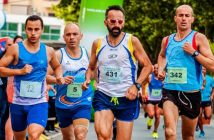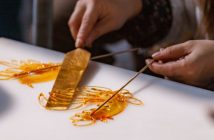
The health inspection (known as tijian in Chinese) is a mandatory part of the residence visa application process for full-time employees, spouses, students, and other foreigners. For a process that only takes about an hour, it tends to be a major production mostly because of the remote location of the only clinic authorized to conduct the health check. Arm yourself with something to read and a healthy dose of patience, and it will be done before long.
The location couldn’t be more inconvenient, even for foreigners living in Haidian District. The good news is that taxi drivers at Xierqi subway station on Line 13 usually know why you’re there and – more importantly – where to go. Still, it’s best bring the address just in case.
It’s a long ride to the middle of nowhere, so be sure to bring everything you need. A few services such as photos or copying are available at the tiny strip mall across the street, but don’t plan on using them. For example, there’s no automatic teller machine at the clinic or anywhere nearby, so be sure to bring enough money to cover the roundtrip taxi fare, health check fee (RMB 650), and RMB 30-50 for courier delivery of the results (more on this below).
The clinic is open Monday to Friday from 8.30am to 11.30am. There are two schools of thought about when to arrive; early birds believe that getting right there when it opens means they’ll finish swiftly and be on their way well before 11.30am.
However, experience shows that arriving closer to closing time ensures a quicker passage because all the early birds are finished and the medical technicians on staff are eager to go to lunch on time. If you’re in by 11.15am, they should hurry you through the process and make sure you’re out by 11.30 – it’s a procrastinator’s delight. The only drawback is that applicants are required to fast before doing the blood test; people who’d rather eat breakfast may want to go early.
The check is done in an assembly line fashion. The doctors and nurses who work at the clinic speak enough English to keep things moving, but don’t expect any medical advice or a pleasant bedside manner.
Upon arrival, fill out the form with your information. Filling out the form in English is acceptable, but make sure you know your home, office, or school address in pinyin form. Along with the filled-out form, you’ll need two passport-sized photos with a white background. Wait in line at the reception desk, where the clerk will take your form, passport, and photos, then register you. You’ll be given a sheet on which each health check “station” will record your medical results. After this, move to the left and follow the order for the various examinations. Carry your sheet with you, as it has bar codes affixed to it that will be used to process your information.
Bear in mind that the health check process is largely perfunctory. Anyone well enough to get themselves to the clinic should be healthy enough to pass the test, with possible exceptions, like people with serious, communicable blood-borne diseases such as HIV. That said, take the examinations seriously; the health check is required not only for a visa longer than six months, but also for other credentials such as a driver’s license.
- Blood test: This is usually the first stop. Blood is drawn from a vein on the arm, so it’s not a simple pinprick. Anyone who gets dizzy either from blood tests or the sight of their own blood should let the technician know in advance. That being said, the process doesn’t really hurt and is over very quickly. The needles are changed and discarded after each use, so don’t worry about hygiene.
- Abdominal ultrasound: You’ll be asked to lie on a table and lift your shirt. There’s a curtain for privacy. Brace yourself; the gel used on the ultrasound wand is cold. The nurse will make sure there aren’t any aliens incubating inside you and move you swiftly along; don’t be surprised if she says something like, “Your liver is fat.”
- Chest X-ray: You’ll stand up for this one; make sure to use the lead cover to shield your reproductive organs. It’s just a flick of the switch, then it’s over. That strange green, nighttime glow goes away after a day or so (just kidding).
- Ears, eyes, and throat: This is a simple eye test, with your vision tested separately. There’s no hearing test – just a visual inspection of the ears and throat by the technician. Any visual shortcomings may be noted; you may be required to wear glasses if you decide to get your driving license here.
- Electrocardiogram (ECG): The technician will put a cuff on your wrist and ankle, along with some very cold suction cups on your chest. The print-out of your cardiac activity will be given to you; don’t lose it, as it will become part of your file.
- Blood pressure: The exam room is labeled with something general like “medical,” but it’s actually a blood pressure check. A normal reading is 120 over 80.
- Lymph nodes and height/weight: The last stop on this medical odyssey is upstairs, where the technician will palpate around your throat to check the lymph nodes. Finally, you’ll be asked to step on a scale to measure your height and weight.
Once all your health checks are complete, hand in all your documents to the reception desk (at the line labeled “Cashier”) and pay the fee. You will receive a receipt, which will allow you to collect the results. It takes four working days to process the results and no rush service is available.
Now, you have a choice: Return four business days later to pick up the results in the afternoon, or simply pay to have a courier deliver the results to your home or office. The latter option is the clear winner. The service is convenient, reliable, and starts at RMB 30 depending where you’re having the results sent to. Just make sure you have the delivery address in Chinese; the courier representative can help you fill out the invoice if you don’t write Chinese characters. Give them your receipt, fill out the delivery form, pay the fee, and start making your way back towards civilization.
Once the results arrive, you’ll use them as part of your residence visa application. The document will be inspected by the immigration officer and returned to you. You probably won’t need the health check results again, but don’t lose them. The certificate does have other uses besides visa applications and the entire process will have to be repeated all over again if they’re misplaced.
Haidian Clinic of Beijing International Travel Healthcare Center 北京国际旅行卫生保健中心海淀分中心
Mon-Fri 8.30-11.30am. 10 Dezheng Lu, Haidian District (8240 3675) 海淀区德政路10号
This article originally appeared in the beijingkids Home & Relocation Guide 2014. To get your free copy, email distribution@truerun.com or view it online at Issuu.
Photo: Thirteen of Clubs (Flickr)



